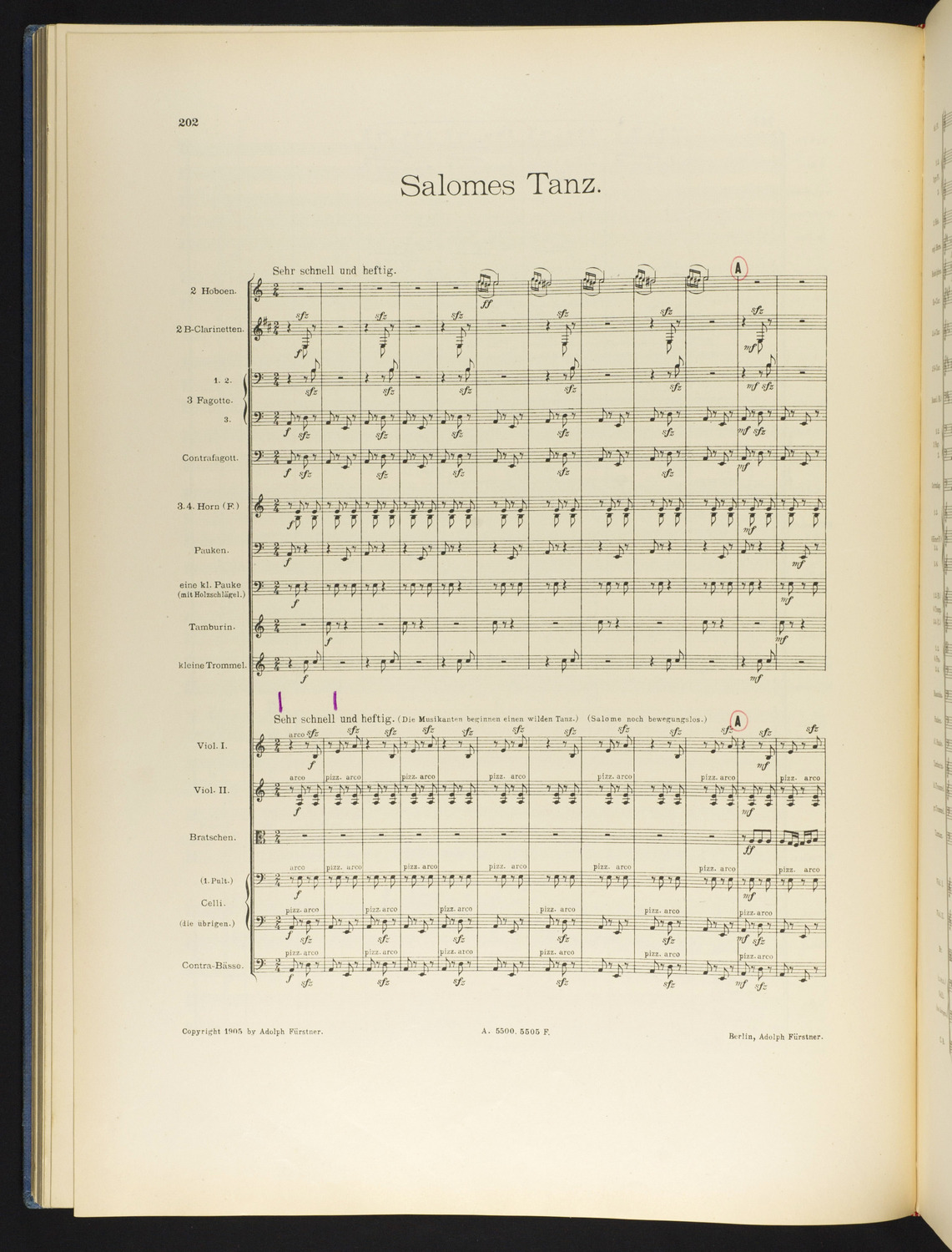Richard Strauss—Salome

Richard Strauss. Salome. Berlin: Adolph Fürstner, 1905. pp. 202-203.
© Copyright 1905 by Adolph Fürstner. Copyright assigned 1948 to Boosey & Hawkes, Ltd.

Lilly Library M5.B9 S854
Salome, a single-act opera by Strauss, premiered in 1905. Based on Oscar Wilde’s French play Salome and material from Matthew 14, Strauss’s opera examines the circumstances surrounding John the Baptist’s beheading. The titular character is the daughter of Herodias who dances for King Herod. The king, so enthralled by Salome, promises her anything she wants, up to half his kingdom. She asks for the imprisoned John the Baptist’s head on a platter. The aggressive, sexualized portrayal of Salome sparked a great deal of interest and controversy in the early 1900s.
Strauss’s music was also daring for its day. Set for a large ensemble, the opera’s chromaticism pushes tonality to its limits. The score uses this to dramatic effect. The imprisoned John often sings tonal material, while Herod’s part is tonally unstable, largely based on the whole-tone scale. This musical contrast emphasizes the righteousness of John’s character and the instability of Herod’s. The excerpt here shows the beginning of Salome’s famous “Dance of the Seven Veils,” a stirring portrayal of the fateful dance that moved Herod so much. The stage direction reads, “The musicians begin a wild dance. Salome still motionless.” This copy of Salome is a first edition, published in 1905, and comes from the Lilly Library.
